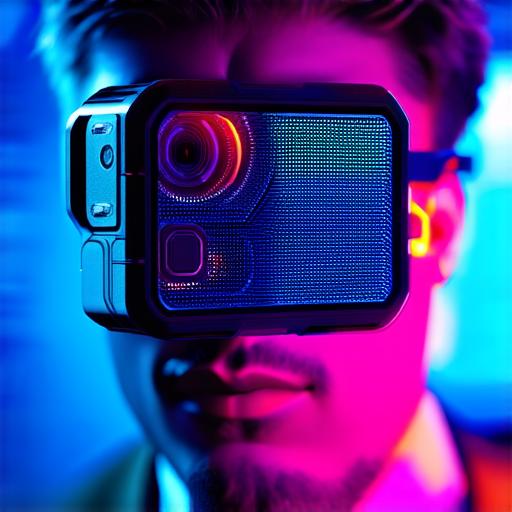Augmented reality (AR) applications have become increasingly popular in recent years, as they offer users an immersive and interactive experience that blends the real world with digital elements.
The Importance of 3D Models in AR Applications

AR applications rely on 3D models to bring virtual objects to life and allow users to interact with them in a realistic way. 3D models are created using specialized software that enables designers to create detailed, three-dimensional representations of objects.
These models can be used in a variety of ways, including product visualization, training simulations, and gaming experiences.
One of the key benefits of 3D models is that they enable developers to create interactive, immersive experiences that are more engaging and realistic than traditional 2D interfaces. For example, an AR application that allows users to view a 3D model of a product can help them understand its features and benefits in a way that is not possible with a flat image or video.
Similarly, an AR application that allows users to interact with virtual objects in a game can provide a more immersive and engaging experience than a traditional gaming interface.
Best Practices for Developing 3D Models for AR Applications
When developing 3D models for AR applications, there are several best practices that you should keep in mind to ensure that your models are optimized for use in an AR environment.
-
Keep it simple: AR applications often require users to interact with virtual objects in a real-time environment, so it is important to keep your 3D models as simple and intuitive as possible. Avoid creating models with complex textures or intricate details that could slow down the rendering process or make it difficult for users to interact with the model.
-
Optimize for performance: AR applications often run on mobile devices, which can have limited processing power. To ensure that your 3D models run smoothly in an AR environment, it is important to optimize them for performance. This may involve reducing the number of polygons or textures used in the model, or using techniques such as level of detail (LOD) to reduce the amount of data that needs to be processed.
-
Test in real-world environments: Before deploying your AR application, it is important to test it in real-world environments to ensure that it works as expected. This may involve testing the application on a variety of devices and platforms, as well as simulating different lighting conditions and environments to ensure that the models look and behave as intended.
-
Use standard formats: To ensure compatibility with different AR platforms and devices, it is important to use standard file formats for your 3D models. This may include using formats such as OBJ or FBX, which are widely supported by most AR development tools and engines.
Tools and Techniques for Developing 3D Models for AR Applications
There are many tools and techniques available for developing 3D models for AR applications. Some of the most popular include:
-
3D modeling software: There are many different types of 3D modeling software available, each with its own strengths and weaknesses. Popular options for AR development include Blender, Maya, and 3ds Max.
-
Texture mapping: Texture mapping is the process of applying textures to a 3D model to give it a more realistic appearance. This may involve using techniques such as UV mapping or physically-based rendering (PBR) to create detailed, high-quality textures that look and behave like real-world materials.
